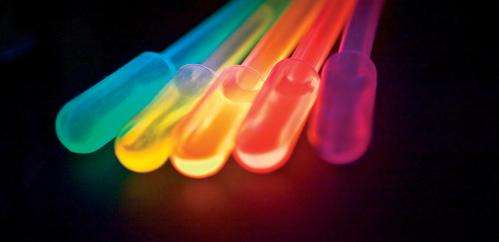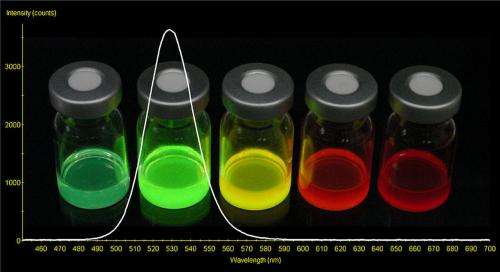The future is bright, the future is quantum dot televisions

The Consumer Electronics Show (CES) has arrived again, the world's largest consumer electronics and technology exhibition in Las Vegas, where manufacturers will show off the new technologies available in 2015.
Wearables, 3D printers, curved displays and other technology that has graduated from the cutting edge into products available to the consumer – all of them have had their moment in the spotlight at CES.
Korean electronics and display manufacturer LG has set the ball rolling by announcing its 4K ultra high-definition television displays (UHDTVs) that use quantum dot technology, an improved method for producing colour displays.
What exactly is a quantum dot?
A significant improvement on existing LCD or LED methods, the technology works by shining blue light through nanocrystals of varying size from two to ten nanometres, which absorb light of one wavelength and emit light of another, very specific wavelength. Each dot emits a different colour depending on its size. A film of quantum dots of a size suitable to produce red and green light is added in front of the screen's backlight. Generating light via the quantum dots narrows the wavelength of the red and green light produced, meaning less light is caught by the LCD filter. This means better colour rendition and brighter colours.
LG got its announcement in ahead of other manufacturers to try and gain a lead by associating its products with the higher contrast, improved saturation, and impressively wide colour gamut (the range of colours a display can reproduce) that quantum dots provide. This makes such displays ideal for viewing high-definition and ultra high-definition content, and for those working in graphic design, photo or film production.
Upgrading 'broadcast quality'
The move towards UHDTV is not just about more pixels and higher-resolution screens. Manufacturers and broadcasters want to create an environment where video and images can be delivered to the public with as high a dynamic range as possible, while remaining economical to manufacture.

And this isn't in the far future; in fact, the new standards – required for all technologies to become established – have already been sanctioned. The ITU-rec 2020 standard for ultra high-definition television allows for higher frame rates of up to 120 fps, higher bit rates and larger contrast and colour gamuts.
At the moment, content termed "high-definition" is broadcast at 1920 x 1080 pixels with a specific frame rate, range of colour and contrast, allowing consistent reproduction across all compatible displays. But both the broadcast and cinema industries can already produce material that exceeds these standards, there are just no devices yet that can take advantage of the best-quality images possible – there isn't much point delivering more information than the current displays can handle.
So the use of quantum dots extends the capability of ultra high-definition displays, allowing the delivery of higher dynamic range media to the public in the future. As a bonus, quantum dots are significantly cheaper than other competing high-quality display technologies, such as OLED, organic light-emitting diodes, which were heralded as the next big thing at previous CES shows, but whose star is already waning.
At the moment quantum dots are being used only combined with other types of backlights, but it's possible to engineer a method of using them without. In any case, for 2015 and the foreseeable future, the world's best video and image reproduction for high-definition content will be delivered with quantum dots.
Source: The Conversation
This story is published courtesy of The Conversation (under Creative Commons-Attribution/No derivatives).
![]()




















